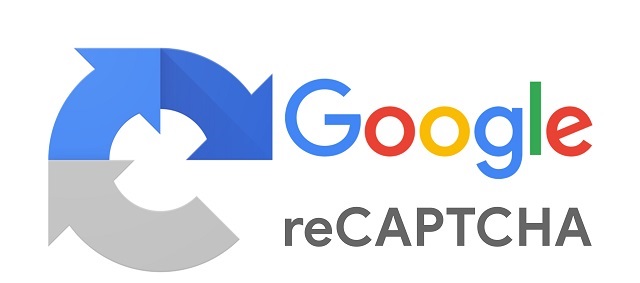Source: www.pinterest.com Thorn or þorn Þ þ is a letter in the Old English Gothic Old Norse or þorn Þ þ is a letter in the Old English Gothic Old Norse.
Source: www.pinterest.com It was also used in medieval Scandinavia but was later replaced with the digraph th except in Iceland where it survives.
Source: www.pinterest.com This sound was regularly realized in Old English as the voiced fricative ð between voiced sounds but either letter could be.
Source: br.pinterest.com Thorn or þorn Þ þ is a letter in the Old English Gothic Old Norse Old Swedish and modern Icelandic alphabets as well as some dialects of Middle English.
Source: nl.pinterest.com This sound was regularly realized in Old English as the voiced fricative ð between voiced sounds but either letter could be.
Source: www.pinterest.com It was also used in medieval Scandinavia but was later replaced with the digraph th except in Iceland where it survives.
Source: www.pinterest.com All early printing presses came from Germany and later also Italy who had no Thorn letter in their alphabet.
Source: www.pinterest.com In the Latin alphabet the Y was the symbol that most closely resembled the character that represented thorn.
Source: www.pinterest.com In the Latin alphabet the Y was the symbol that most closely resembled the character that represented thorn.
Source: es.pinterest.com A long long time ago when English was still Old English the letter people used to represent the th sound was represented by a letter called thorn The thorn looked like a letter p with the hump part scooted down to the middle.
Source: www.pinterest.com Thorn or þorn Þ þ is a letter in the Old English Gothic Old Norse or þorn Þ þ is a letter in the Old English Gothic Old Norse.
Source: www.pinterest.com A long long time ago when English was still Old English the letter people used to represent the th sound was represented by a letter called thorn The thorn looked like a letter p with the hump part scooted down to the middle.
Source: nl.pinterest.com It was also used in medieval Scandinavia but was later replaced with the digraph th except in Iceland where it survives.
Source: www.pinterest.com Thorn or þorn Þ þ is a letter in the Old English Gothic Old Norse or þorn Þ þ is a letter in the Old English Gothic Old Norse.
Source: www.pinterest.com This sound was regularly realized in Old English as the voiced fricative ð between voiced sounds but either letter could be.
Source: www.pinterest.com The correct answer is Y.
Source: www.pinterest.com In the Latin alphabet the Y was the symbol that most closely resembled the character that represented thorn.
Source: in.pinterest.com A long long time ago when English was still Old English the letter people used to represent the th sound was represented by a letter called thorn The thorn looked like a letter p with the hump part scooted down to the middle.
Source: www.pinterest.com Thorn or þorn Þ þ is a letter in the OldEnglish Gothic OldNorse OldSwedish and modern Icelandicalphabets as well as some dialects of MiddleEnglish.
Source: www.pinterest.com This sound was regularly realized in Old English as the voiced fricative ð between voiced sounds but either letter could be.
Source: www.pinterest.com All early printing presses came from Germany and later also Italy who had no Thorn letter in their alphabet.
Source: www.pinterest.com In the Latin alphabet the Y was the symbol that most closely resembled the character that represented thorn.
Source: in.pinterest.com In the Latin alphabet the Y was the symbol that most closely resembled the character that represented thorn.
Source: www.pinterest.com It was also used in medieval Scandinavia but was later replaced with the digraph th except in Iceland where it survives.
Source: www.pinterest.com All early printing presses came from Germany and later also Italy who had no Thorn letter in their alphabet.
Source: www.pinterest.com This sound was regularly realized in Old English as the voiced fricative ð between voiced sounds but either letter could be.
Source: www.pinterest.com EthEdh ð and ash æ are letters in the International Phonetic Alphabet and also frequently-used phonemic symbols for English.
Source: www.pinterest.com A long long time ago when English was still Old English the letter people used to represent the th sound was represented by a letter called thorn The thorn looked like a letter p with the hump part scooted down to the middle.
Source: www.pinterest.com Thorn or þorn Þ þ is a letter in the OldEnglish Gothic OldNorse OldSwedish and modern Icelandicalphabets as well as some dialects of MiddleEnglish.
Source: www.pinterest.com Lost 10 English Letters Part 02 Steemit Thorn Letter Meme File Runic Letter Thurisaz Svg Wikimedia Commons Thorn Letter 978 613 0 51752 6 6130517521 9786130517526 Bird Thorn Webfont Desktop Font Myfonts We Used To Have Six More Letters In The English Alphabet Quartz.
Source: www.pinterest.com It was also used in medieval Scandinavia but was later replaced with the digraph th except in Iceland where it survives.
Source: www.pinterest.com All early printing presses came from Germany and later also Italy who had no Thorn letter in their alphabet.
Source: www.pinterest.com All early printing presses came from Germany and later also Italy who had no Thorn letter in their alphabet.
Source: www.pinterest.com Thorn or þorn Þ þ is a letter in the Old English Gothic Old Norse Old Swedish and modern Icelandic alphabets as well as some dialects of Middle English.
Source: www.pinterest.com A long long time ago when English was still Old English the letter people used to represent the th sound was represented by a letter called thorn The thorn looked like a letter p with the hump part scooted down to the middle.
Source: www.pinterest.com Thorn never made it however the IPA and English phonemic symbol for voiceless interdental fricative is Greek theta θ.
Source: www.pinterest.com It was also used in medieval Scandinavia but was later replaced with the digraph th except in Iceland where it survives.
